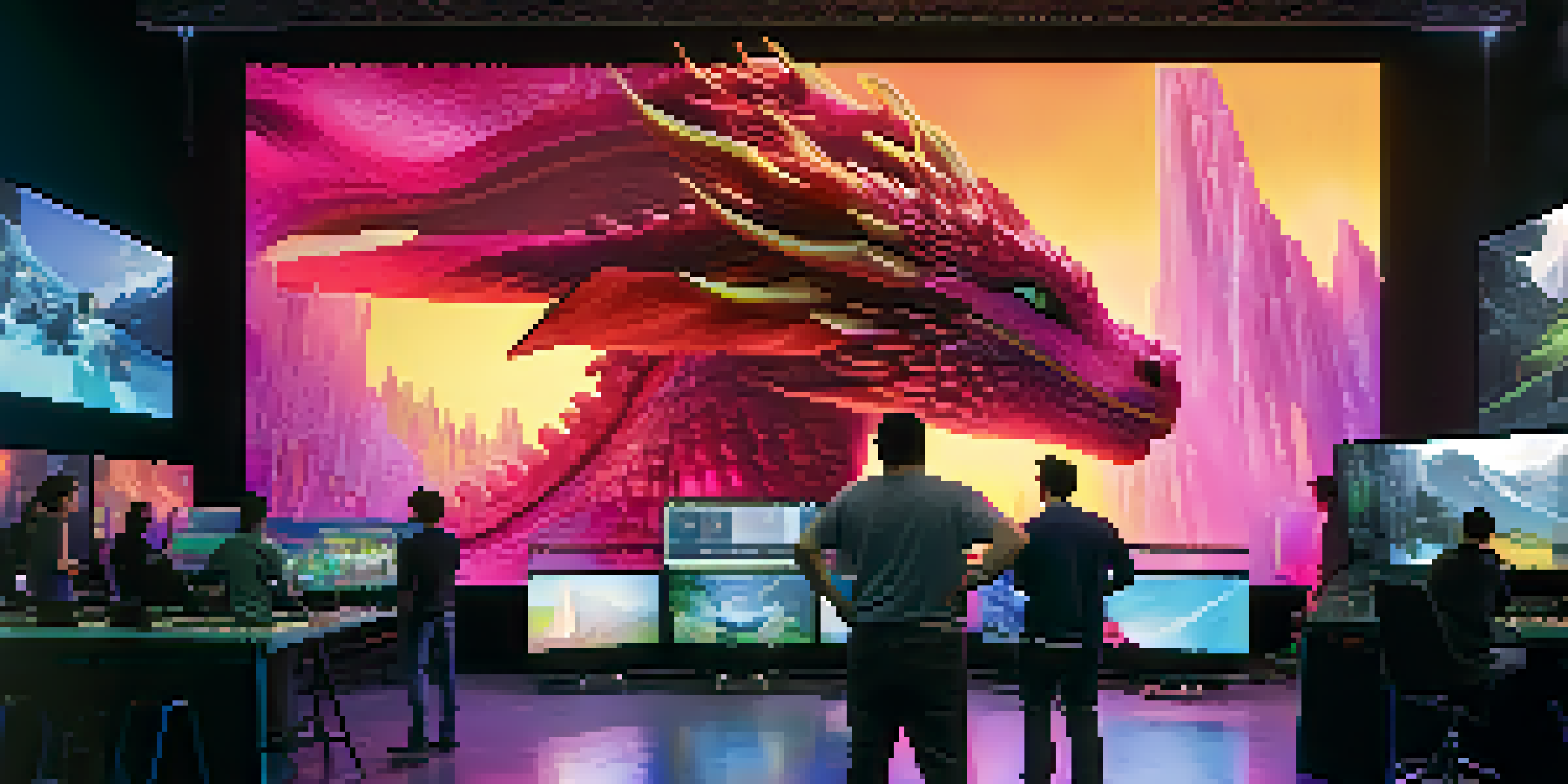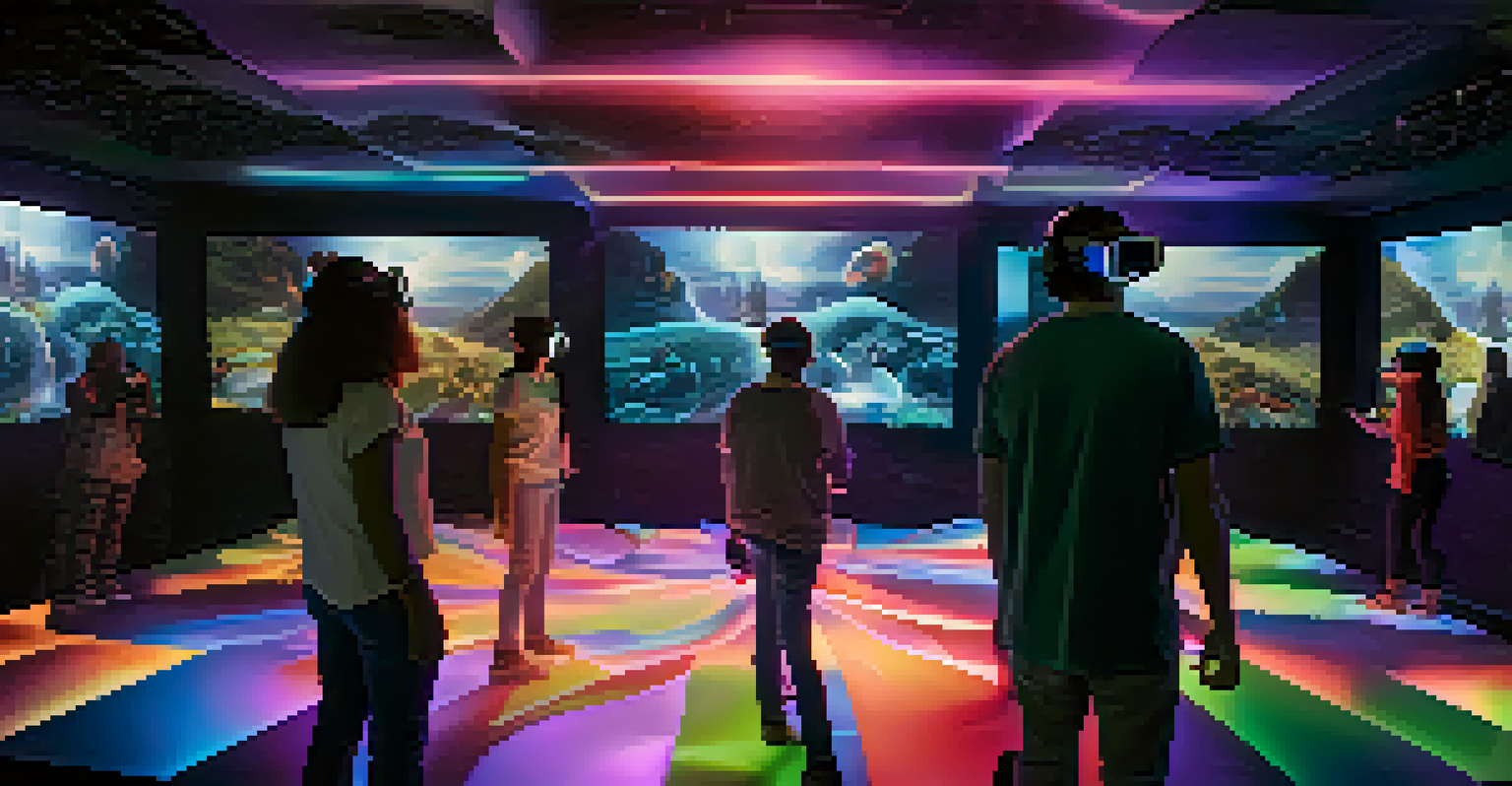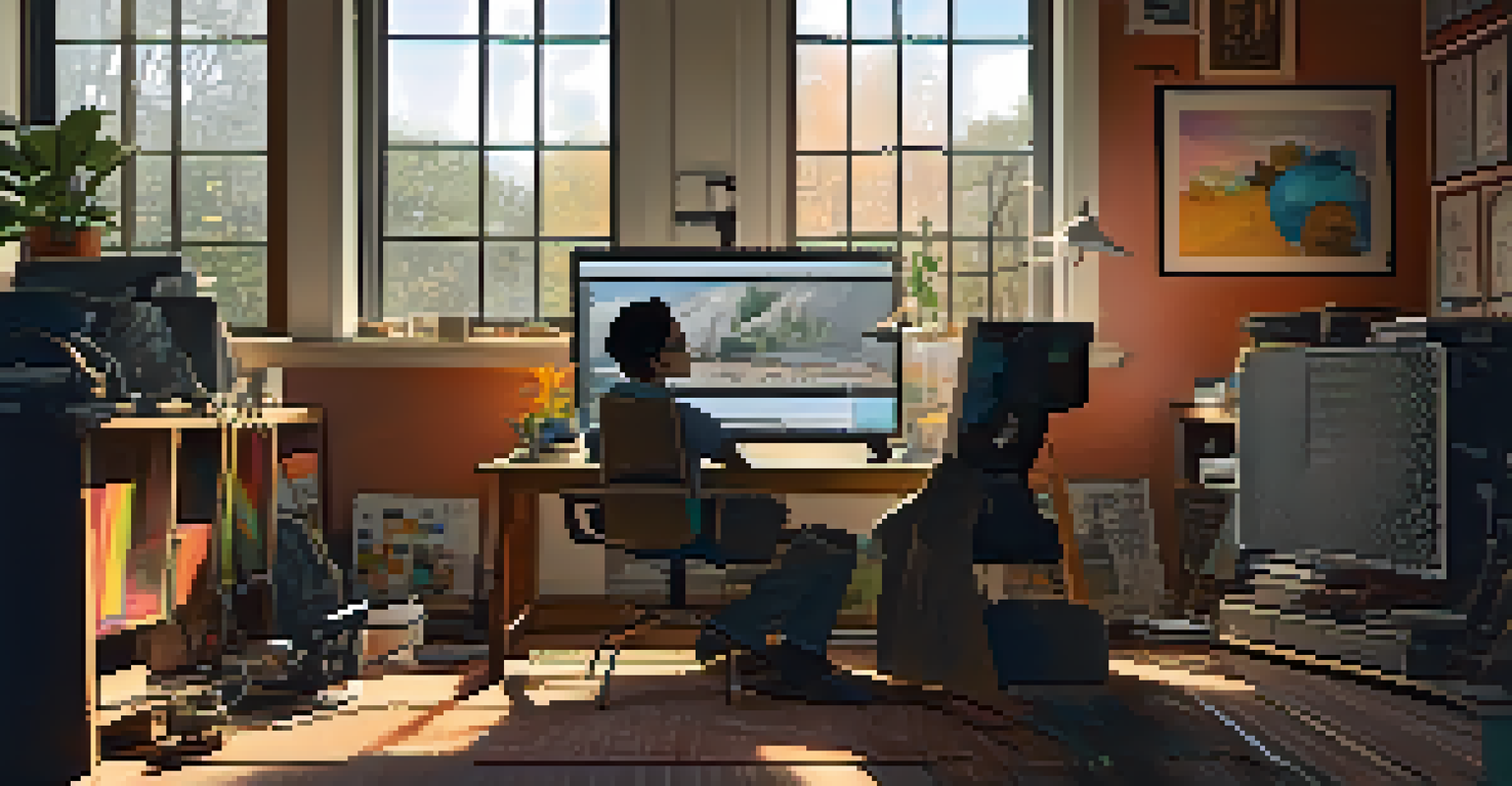The Future of Visual Effects: Trends Shaping the Industry

The Rise of Real-Time Rendering Technology
Real-time rendering is revolutionizing how visual effects are created, allowing for instant feedback during production. This technology, once confined to video games, is now being adopted in film and television, enabling creators to visualize their scenes as they shoot. Imagine being able to see how a CGI dragon interacts with live actors in real-time—this is becoming a reality thanks to advancements in graphics processing power.
The future of filmmaking is not just about what we create, but how we create it. Real-time rendering and AI are opening doors to creativity we never knew existed.
With tools like Unreal Engine and Unity making waves in the industry, filmmakers are finding new ways to streamline their workflows. By integrating real-time rendering, they can make creative decisions on the fly, reducing the time and cost typically associated with post-production. This shift not only enhances efficiency but also opens up new avenues for storytelling and creativity.
As real-time rendering continues to evolve, we can expect to see even more immersive experiences in film. This technology will likely bridge the gap between animated and live-action content, creating a seamless blend that captivates audiences and sets a new standard for visual storytelling.
Artificial Intelligence: The Game Changer
Artificial intelligence (AI) is making significant strides in the realm of visual effects, offering tools that enhance creativity and efficiency. From automating tedious tasks like rotoscoping to generating realistic animations, AI is transforming the way artists work. For instance, AI-driven software can analyze countless frames of footage and assist in creating seamless transitions between scenes.

Moreover, AI can help predict audience preferences by analyzing data from previous films, allowing creators to tailor their visual effects for maximum impact. This predictive capability can guide decisions on everything from color grading to CGI character designs. By leveraging AI, filmmakers can craft experiences that resonate more deeply with viewers.
Real-Time Rendering Transforms Film
Real-time rendering technology is enabling filmmakers to visualize scenes instantly, enhancing creativity and efficiency during production.
As AI technology matures, we can anticipate a future where artists collaborate with intelligent systems to push the boundaries of creativity. This partnership will not only streamline production but also foster innovative storytelling techniques that keep audiences engaged and entertained.
Virtual and Augmented Reality in Film
Virtual reality (VR) and augmented reality (AR) are becoming essential tools for filmmakers, providing unique ways to engage audiences. These technologies allow viewers to immerse themselves in the story, creating a more interactive experience. For example, VR can transport viewers into a film's universe, making them feel as though they are part of the action.
Storytelling is not just about what happens, but how it happens. Immersive technologies like VR and AR are redefining our relationship with narratives.
Augmented reality, on the other hand, enhances the real world with digital elements, which can be used in promotional campaigns or interactive storytelling. Imagine watching a movie and then using an app to see characters appear in your living room—this kind of engagement can deepen the emotional connection to the story. As these technologies grow, filmmakers will find innovative ways to incorporate them into their narratives.
The integration of VR and AR not only expands the possibilities for storytelling but also challenges traditional cinematic experiences. As audiences become more accustomed to these immersive formats, filmmakers will need to adapt their techniques, ensuring that visual effects remain relevant and exciting in this evolving landscape.
The Influence of 3D and 4D Technologies
3D and 4D technologies have already begun to reshape the visual effects landscape, creating more dynamic and engaging experiences. 3D animation adds depth to films, drawing viewers into the action and enhancing their emotional responses. Meanwhile, 4D experiences introduce elements like motion seats, scents, and wind, making viewers feel as though they are part of the film's world.
These technologies not only captivate audiences but also offer filmmakers new ways to tell their stories. By utilizing 3D and 4D effects, directors can emphasize critical moments and create memorable experiences that linger in viewers' minds. The ability to blend physical sensations with visual storytelling opens up a treasure trove of creative possibilities.
AI Enhances Visual Effects Production
Artificial intelligence is streamlining visual effects processes and helping creators tailor their work to audience preferences.
As 3D and 4D technologies continue to advance, we can expect films to become increasingly immersive. This evolution will likely lead to a greater focus on audience engagement, as filmmakers strive to create experiences that resonate on both emotional and sensory levels.
Sustainable Practices in Visual Effects Production
Sustainability is becoming a crucial consideration in the visual effects industry, as filmmakers seek to reduce their environmental impact. From using energy-efficient technology to opting for virtual sets instead of physical locations, studios are making strides toward greener practices. This shift not only benefits the planet but also aligns with the growing consumer demand for eco-friendly productions.
Many studios are now implementing sustainable practices throughout their workflows, such as minimizing waste and carbon footprints. For instance, digital effects can replace traditional pyrotechnics, reducing both emissions and safety risks on set. By prioritizing sustainability, filmmakers can create stunning visuals while also contributing to a healthier planet.
As the industry moves forward, we can expect sustainability to become an integral part of visual effects production. This commitment to eco-friendly practices will not only enhance the industry's reputation but also inspire future generations of filmmakers to prioritize the planet in their storytelling.
The Role of Independent Filmmakers in VFX Evolution
Independent filmmakers are playing a pivotal role in the evolution of visual effects, often pushing the boundaries of creativity with limited resources. With access to affordable software and tools, these creators can produce high-quality visual effects that rival those of major studios. This democratization of technology means that innovative ideas can flourish outside the traditional Hollywood system.
Many independent films are experimenting with unique visual styles and storytelling techniques, showcasing how creative use of VFX can enhance narratives. These projects often resonate with audiences on a deeper level, proving that compelling storytelling doesn’t always require a big budget. Independent filmmakers are inspiring a new wave of creativity in the industry, highlighting the importance of originality and vision.
Sustainable Practices in VFX
The visual effects industry is increasingly adopting sustainable practices to reduce environmental impact while creating stunning visuals.
As technology continues to advance, we can expect independent filmmakers to further influence the visual effects landscape. Their fresh perspectives and willingness to take risks will drive the industry forward, ensuring that visual effects remain a vibrant and integral component of modern storytelling.
The Future of Collaboration in VFX Teams
Collaboration is key to the success of visual effects projects, and the future promises even more innovative teamwork. As projects become more complex, the need for diverse skill sets is growing, leading to more interdisciplinary teams. Visual effects artists, animators, and software developers are working closely together to create seamless integrations of live action and CGI.
Remote collaboration tools are also becoming increasingly important, allowing teams to work together regardless of location. This shift enables studios to tap into a global talent pool, bringing in fresh ideas and perspectives that enhance the creative process. With technology facilitating communication, the possibilities for collaboration are virtually limitless.

In the future, we can expect collaboration in VFX to become more streamlined and efficient. As teams continue to adapt to new technologies, they will be better equipped to tackle the challenges of modern storytelling, resulting in more captivating visual experiences for audiences.